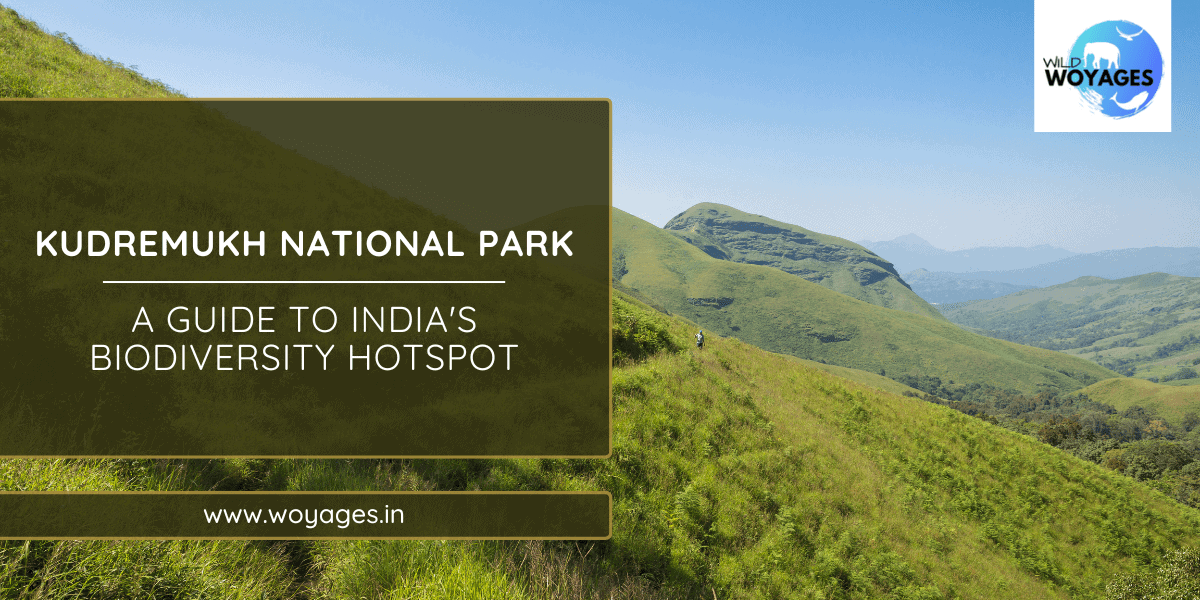If you’re looking for a scenic and adventurous trip, Kudremukh National Park is the perfect destination. Located in the Chikkamagaluru and Dakshina Kannada districts in the Western Ghats of Karnataka, India, this park boasts a unique shape of its main peak and is home to several species of flora and fauna. Kudremukh National Park is spread over 600.32 square kilometers, making it the second-largest wildlife protected area in the Western Ghats. The park is a part of the world’s 38 ‘hottest hotspots’ of biological diversity, and a UNESCO World Heritage Site. The name Kudremukh, which means “horse face” in Kannada, is derived from the shape of the Kudremukh peak, which resembles the face of a horse. The park is known for its lush green forests, rolling hills, waterfalls, and grassy meadows. It is also home to several endangered species, including the lion-tailed macaque, the Malabar civet, and the great Indian hornbill. Kudremukh Wildlife Sanctuary offers a variety of activities, such as trekking, camping, and boating. The park has several trekking trails, ranging from easy to difficult, that offer breathtaking views of the surrounding hills and forests. You can also take a boat ride in the Bhadra River that flows through the park, which is a great way to explore the park’s natural beauty. Geography and Climate Topography Kudremukh National Park is situated at an altitude of 1,894 meters above sea level and is surrounded by mountains and valleys. The park is home to the Kudremukh Peak, the third-highest peak in Karnataka. The park is also known for its shola grasslands and forests, which are unique to the Western Ghats. The shola forests are characterized by their dense canopy cover and presence of endemic species. The grasslands are interspersed with streams and rivers, which provide habitat to several aquatic species. Weather Patterns Kudremukh National Park experiences a tropical monsoon climate. The park receives heavy rainfall during the monsoon season, lasting from June to September. The average annual rainfall in the park is around 7,000 mm. The park also experiences a dry season from December to February, during which the temperature drops to around 19°C. The wet climate and the water retention capacity of the shola grasslands and forests have led to the formation of thousands of perennial streams in the region converging to form the three major rivers of the region, Tunga, Bhadra, and Nethravathi, which form the lifeline of the region by providing water to the people living in the adjoining areas. The best time to visit Kudremukh National Park is from November to February when the weather is pleasant and the park is lush green. It’s also the ideal time to click wildlife photos and go on safaris. However, visitors should be prepared for sudden changes in weather and carry appropriate clothing and gear. Flora and Fauna Kudremukh National Park is home to a diverse range of flora and fauna. The park is famous as a biodiversity hotspot and is a UNESCO World Heritage Site. Native Plant Species Numerous native plant species, such as evergreen woods, meadows, and shola forests, are found in the park. The evergreen forests consist of trees like rosewood, teak, and silver oak. The grasslands are home to different types of grasses and herbs, including the rare Kurinji flower, which blooms once every 12 years. The shola forests are unique to the Western Ghats and are characterized by stunted trees, shrubs, and grasses. Wildlife Habitats Numerous wildlife habitats, such as wetlands, woodlands, and grasslands, can be found in the park. Grazing animals like the sambar deer, Indian bison, and wild boar inhabit the grasslands. The forests are home to different types of carnivores, including the Bengal tiger, leopard, and wild dogs (dhole). The Nilgiri tahr, Malabar giant squirrel, and the Nilgiri langur are just a few of the endemic species that call these woodlands home. Other animals present in the national park include the sloth bear, gaur, sambar, jackal, mongoose, common langur, porcupine, spotted deer, and barking deer. Bird species, including the Malabar whistling thrush, Malabar trogon, imperial pigeon, the Nilgiri flycatcher, and the Indian pitta are found in Kudremukh. The wetlands have multiple aquatic species, including fishes, amphibians, and reptiles. Tourist Attractions Kudremukh National Park is a beautiful natural destination that offers a wide range of tourist attractions. Whether you are an adventure seeker or a nature lover, this park has something for everyone. Here are some of the top tourist attractions that you should not miss when visiting Kudremukh National Park: Scenic Viewpoints Kudremukh National Park is home to several scenic viewpoints that offer breathtaking views of the surrounding landscape. One of the most popular viewpoints is the Kudremukh Peak, which stands at an altitude of 1894 meters above sea level. The trek to the peak is a must-do activity for adventure enthusiasts, and the panoramic views from the top are truly worth the effort. Another popular viewpoint is the Hanuman Gundi Falls, which offers stunning views of the waterfall and the lush greenery around it. Waterfalls and Rivers Kudremukh National Park has numerous waterfalls and rivers that add to its natural beauty. Some of the most popular waterfalls in the park include the Kadambi Falls, Hebbe Falls, and Kudremukh Falls. These lush forests encircle these waterfalls, which are ideal for a cool dip on a hot day. The park is also home to several rivers, including the Tunga River and the Bhadra River, which offer opportunities for activities like fishing and boating. Adventure Activities Kudremukh National Park offers several adventure activities that cater to the needs of every adventurer. Here are some of the top activities you can indulge in during your visit to the park. Trekking Trails Kudremukh National Park is also popularly known as a “trekker’s paradise” with trails that cater to different difficulty levels. The park offers a range of trekking trails, from easy walks to challenging treks that can take up to three days to complete. One of the most popular treks is the Kudremukh Trek, which takes you through the heart of the park. The 21-kilometre trail offers breathtaking views of the lush … Read more


